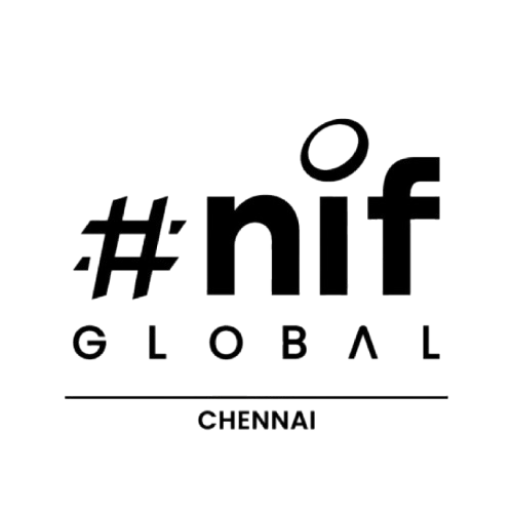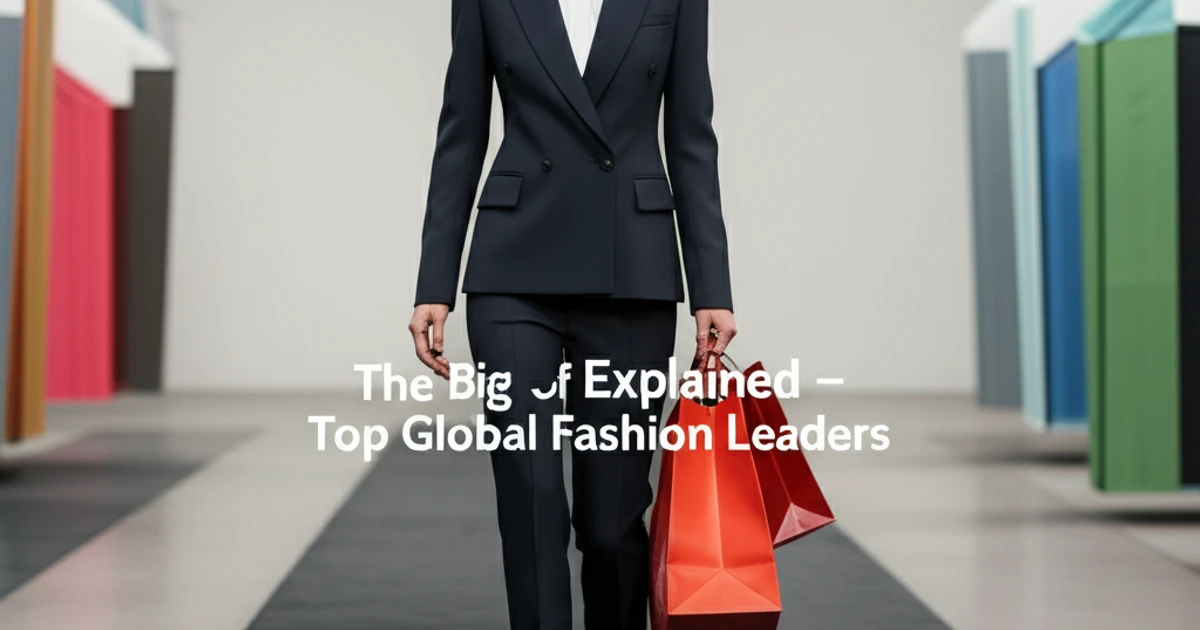Beyond the Runway: Unveiling the Big 4 of Fashion – Your Guide Fashion to Global Dominance
You love fashion. You breathe fashion. Perhaps you dream of designing the next iconic collection, leading a global brand, or simply understanding the intricate ballet behind the trends that sweep the world. You see the dazzling runways, the celebrity endorsements, the perfectly curated storefronts. But have you ever paused to wonder about the colossal forces orchestrating this magnificent, multi-billion-dollar symphony?
Behind the shimmering silks and cutting-edge designs, a handful of titans hold immense sway over what we wear, what we aspire to, and what truly defines luxury. These aren’t just companies; they are empires, shaping culture, dictating trends, and driving economic engines worldwide. Today, we’re pulling back the velvet curtain to reveal the “Big 4 of Fashion” – the undisputed global fashion leaders whose influence permeates every corner of the industry. For you, the student, the enthusiast, the aspiring fashion leader, understanding these giants isn’t just an academic exercise; it’s a compass for navigating your future in this dynamic world.
What Shapes the Fabric of Global Fashion? And Why Do a Few Companies Dominate?
Imagine a vast, intricate tapestry, woven with threads of creativity, commerce, and culture. Every stitch, every hue, is influenced by myriad factors – consumer tastes, economic shifts, technological advancements, and geopolitical currents. Yet, at the loom, controlling many of the most valuable threads, sit a select few. These entities didn’t just stumble into their positions; they meticulously built their dominance through strategic acquisitions, relentless innovation, and an unparalleled understanding of market desires.
Their power stems from a combination of brand equity, diversified portfolios, robust supply chains, and deep financial reserves. They aren’t just selling clothes or accessories; they’re selling dreams, heritage, and status. By owning multiple coveted brands across different luxury segments – from haute couture to high-end watches, from perfumes to department stores – they create synergistic ecosystems that reinforce their market position, making them the ultimate global fashion leaders. Understanding these fundamental forces is your first step into gaining invaluable fashion industry insights.
LVMH: The Empire of Dreams – Or, How One Man Built a Luxury Colossus.
Have you ever walked past a Louis Vuitton boutique, admired a Tiffany & Co. diamond, or spritzed a Dior perfume? Then you’ve brushed shoulders with the colossal empire known as LVMH Moët Hennessy Louis Vuitton. This French multinational conglomerate, steered by the visionary Bernard Arnault, isn’t just a leader; it’s *the* leader in luxury, a true testament to the power of the Big 4 fashion houses. My first real encounter with the sheer breadth of LVMH was during an internship in Paris, realizing that almost every iconic luxury brand I admired, from Fendi to Givenchy, Celine to Sephora, fell under this single, monumental umbrella. It was an eye-opening moment, revealing the hidden architecture of the fashion world.
LVMH’s strategy is a masterclass in diversification and brand management. They acquire brands with rich heritage and unique identities, then empower them with resources and strategic direction, all while meticulously preserving their distinctiveness. Their portfolio spans six main sectors: Wines & Spirits, Fashion & Leather Goods, Perfumes & Cosmetics, Watches & Jewelry, Selective Retailing, and Other Activities. This incredible breadth not only mitigates risks but also allows for cross-promotion and shared expertise, cementing its position among the top fashion companies. They don’t just sell products; they curate lifestyles, offering everything from a celebratory glass of Dom Pérignon to a coveted Christian Dior gown, epitomizing the ultimate in global fashion leadership.
Kering: The Art of Desire – Beyond the Bold Branding.
If LVMH represents the grand, established empire, then Kering embodies the edgy, avant-garde spirit of modern luxury. Led by François-Henri Pinault, Kering has carved out its own formidable niche among the Big 4 fashion giants by focusing on a more curated, often bolder, portfolio of luxury brands. Think of the revolutionary transformation of Gucci under Alessandro Michele, or the provocative, architectural designs emanating from Balenciaga. It’s like witnessing an art gallery where each masterpiece commands its own unique narrative and emotional resonance.
Kering’s success lies in its ability to empower creative directors and foster a culture of innovation and daring. They’ve championed brands that push boundaries, ignite cultural conversations, and resonate deeply with a contemporary, often younger, luxury consumer. Beyond Gucci and Balenciaga, their stable includes Saint Laurent, Bottega Veneta, and Alexander McQueen, all known for their distinct aesthetic and strong brand identity. Kering is also a significant player in the watch and jewelry sectors with brands like Boucheron. Their commitment to sustainability is another pillar, aiming to lead the industry towards more ethical practices, offering crucial fashion industry insights into responsible luxury.
Richemont: The Quiet Architects of Timeless Elegance – What Lies Beneath the Glamour?
While LVMH and Kering often grab the headlines with their fashion-forward statements, Richemont operates with a more understated, yet equally powerful, elegance. This Swiss luxury goods conglomerate, founded by Johann Rupert, is primarily known for its exquisite “hard luxury” – jewelry and watches – alongside a selection of prestigious fashion and accessories brands. Imagine the intricate dance of gears within a Jaeger-LeCoultre timepiece, or the ethereal sparkle of a Cartier diamond – this is the world Richemont inhabits. My own appreciation for Richemont grew when I inherited my grandfather’s classic IWC Schaffhausen watch; it wasn’t just a timepiece, but a miniature work of art and history, a testament to enduring craftsmanship.
Richemont’s strength lies in its unwavering commitment to unparalleled craftsmanship, heritage, and enduring value. Their stable includes iconic names like Cartier, Van Cleef & Arpels, Piaget, Vacheron Constantin, and Montblanc, alongside fashion houses such as Chloé and Alaïa. These brands don’t chase fleeting trends; they define timelessness, creating pieces that become heirlooms. While perhaps less overtly visible in the “fashion” headlines, their control over the most coveted categories of luxury goods makes them an indispensable pillar among the top fashion companies and truly influential global fashion leaders, representing the pinnacle of precision and artistry within the Big 4 fashion landscape.
The Inditex Phenomenon: Fast Fashion’s Unstoppable Engine – Is Speed the Ultimate Luxury?
Shifting gears entirely, our fourth titan might not drape you in haute couture, but it undeniably dresses the world. Inditex, the Spanish powerhouse behind Zara, Pull&Bear, Massimo Dutti, and other popular brands, represents a different kind of global fashion leadership: the undisputed monarch of fast fashion. Walk into any Zara store worldwide, and you’ll witness their magic firsthand: runway trends, sometimes seen just weeks before, are already hanging on the racks, translated into accessible, stylish pieces. It’s like a real-time, global fashion laboratory, continuously churning out the latest desires.
Inditex’s genius lies in its incredibly agile supply chain, vertical integration, and data-driven approach. They have perfected the art of “test and repeat,” swiftly identifying successful trends and scaling production almost instantly. This ability to rapidly respond to consumer demand and bring new collections to market at an astonishing pace has revolutionized the retail landscape. While facing increasing scrutiny over sustainability and labor practices (challenges inherent to the fast fashion model), Inditex’s commercial prowess and ability to democratize fashion trends make it an undeniable force and a crucial case study for aspiring fashion leaders. Their sheer volume and global penetration cement their status as one of the Big 4 fashion giants, profoundly impacting fashion industry insights.
What Role Will You Play in Fashion’s Future?
So, there you have it – the “Big 4 of Fashion” in their glorious, diverse might. LVMH with its sprawling luxury empire, Kering with its bold, innovative spirit, Richemont with its timeless craftsmanship, and Inditex with its lightning-fast trend translation. Each offers a distinct model of success, a different approach to navigating the complex world of style and commerce.
Understanding these global fashion leaders isn’t just about knowing brand names; it’s about grasping the strategic thinking, the market dynamics, and the consumer psychology that fuels an entire industry. As you embark on your own journey, whether as a designer, marketer, buyer, or simply a passionate observer, this knowledge empowers you. It allows you to see beyond the surface glamour, to analyze the true forces at play, and perhaps, to envision your own unique contribution to the future of fashion. What insights will you glean from their successes? And how will you leverage this understanding to carve out your own influential path in this exhilarating world? The runway is yours to define.


